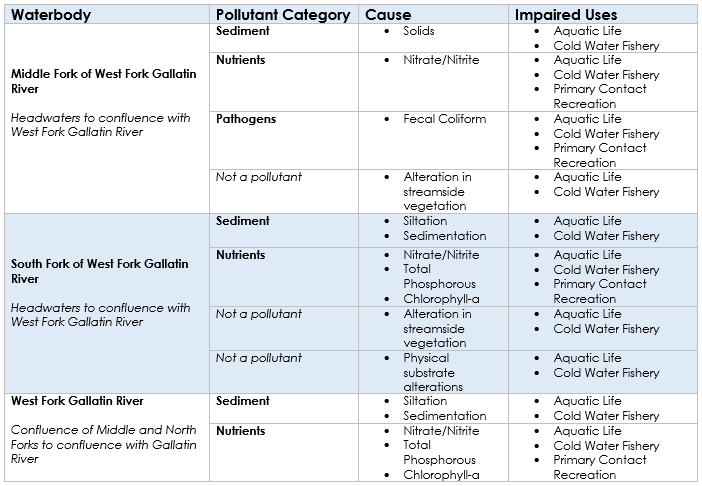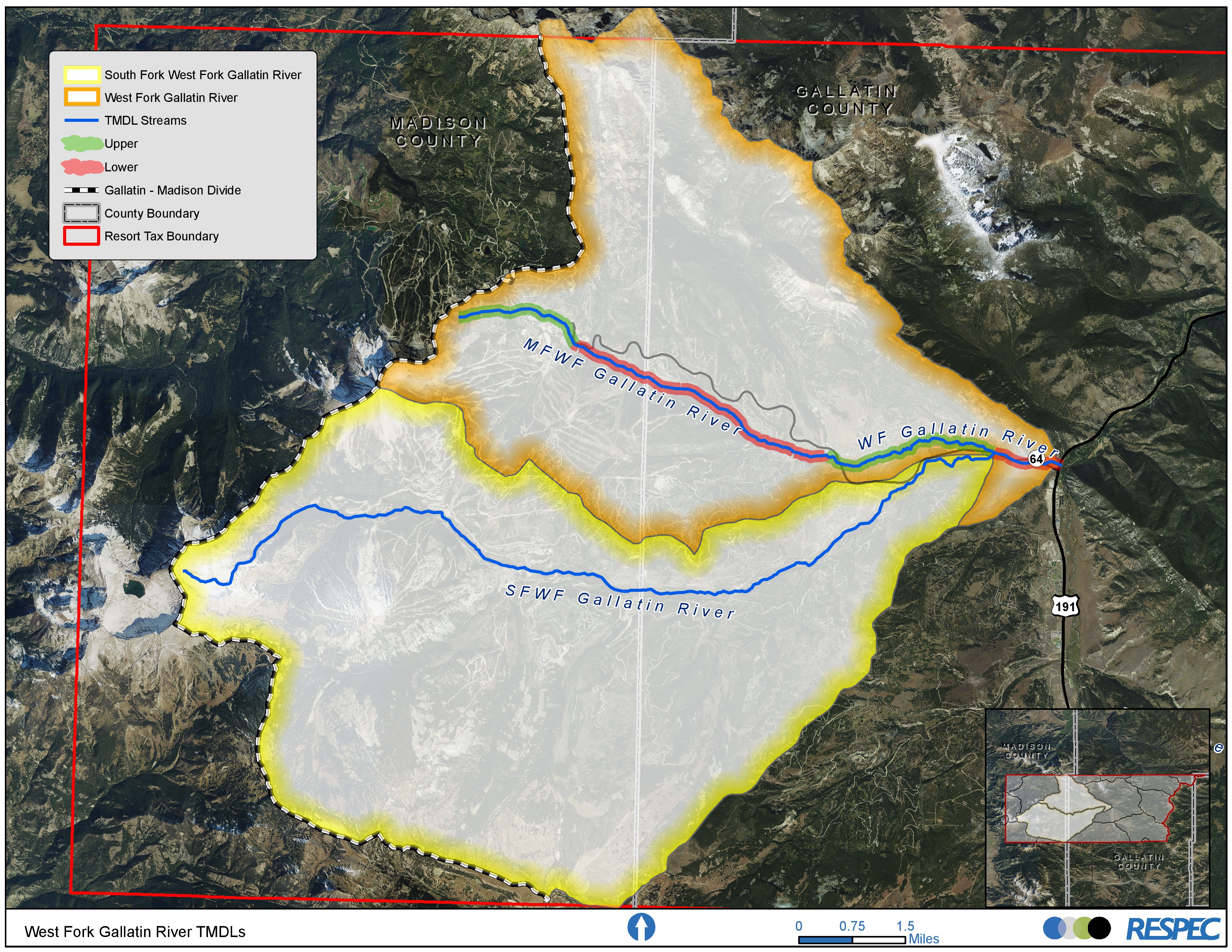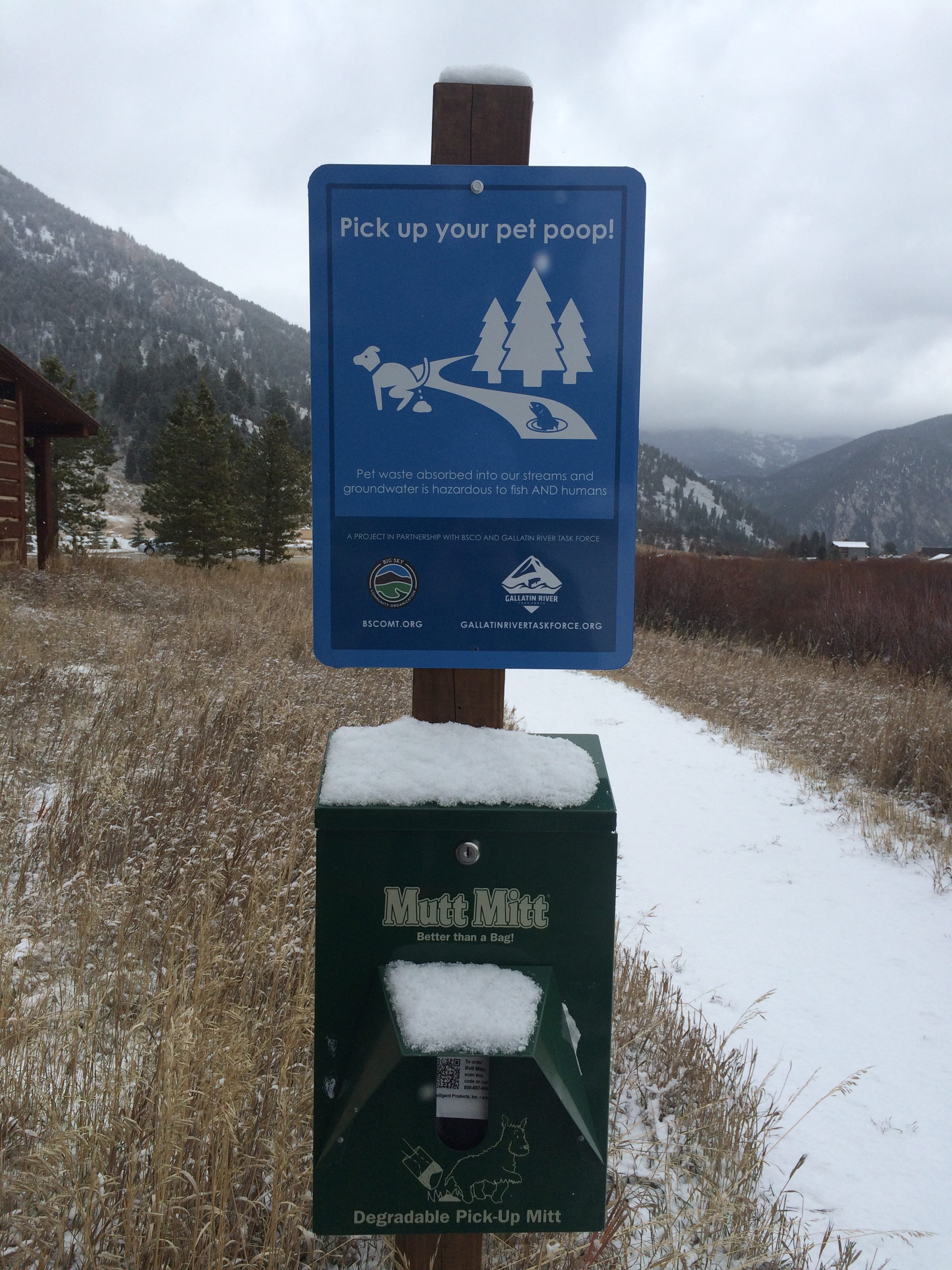Impaired Streams
Streams in the Upper Gallatin have been evaluated through the TMDL (Total Maximum Daily Load) process, which determines the maximum amount of a pollutant (load) that a stream can carry without violating water quality standards set by the Montana Department of Environmental Quality.
Six streams in the Upper Gallatin Watershed do not meet state “water quality targets”: Storm Castle Creek, Taylor Fork, Cache Creek, Middle Fork of West Fork Gallatin River, South Fork of West Fork Gallatin River, and West Fork Gallatin River. The Gallatin River Task Force focuses on monitoring and improving the quality of water in streams in the West Fork Watershed (Big Sky area).
West Fork Watershed Impaired Streams
Three streams in the Big Sky area exceed state water quality standards.

The Middle Fork of the West Fork Gallatin River does not meet state standards for sediment, nutrients, and pathogens. The South Fork of the West Fork Gallatin River does not meet state standards for sediment and nutrients. The West Fork Gallatin does not meet state standards for sediment and nutrients.

Map showing the location of the three streams that exceed state water quality standards in the Big Sky area.
Pollutants of Concern
Nutrients
Nitrogen and phosphorous are essential for plant growth. Excess nutrients increase algal growth, which can have negative impacts including reduced dissolved oxygen levels, unsightly conditions, and poor habitat conditions for fish and other aquatic organisms.
Sources of excess nutrients include pet waste, poorly-maintained septic systems, land application of treated wastewater, fertilizer, household detergents, and erosion. You can reduce nitrogen in the watershed by:
- Maintaining or restoring streamside vegetation
- Using Trout Friendly practices to landscape
- Picking up and disposing of pet waste
- Ensuring that your septic system is functioning properly
- Moving animal feedlots and corrals away from streams
Fine Sediment
Particles of sand, clay, and silt suspended in the water or settled on the river bed. Excess fine sediment fills the spaces between rocks that fish use to spawn; clogs the gills of fish and aquatic insects; raises water temperature; limits light penetration and plant growth; and reduces visibility for aquatic insects.
Sources of fine sediment include natural land disturbance, erosion from construction areas and unpaved roads, disturbance of streamside areas, and road traction sand. Together, we can reduce sediment in our watershed:
- Maintaining or restoring streamside vegetation
- Following construction best management practices
- Recreating responsibility by staying on designated trails and following seasonal closures
Escherichia coli (E. coli)
E. coli is a bacterium found in the lower intestines of warm-blooded animals. Most E. coli strains are harmless, but some can cause severe illnesses, especially in young children and the elderly.
Sources of E. coli include wildlife, livestock, or pet waste as well as leaking septic tanks. Reducing E. coli in our rivers and streams is as easy as 1, 2, 3:
- Pick up pet waste
- Fence livestock out of streams
- Maintain your septic system



